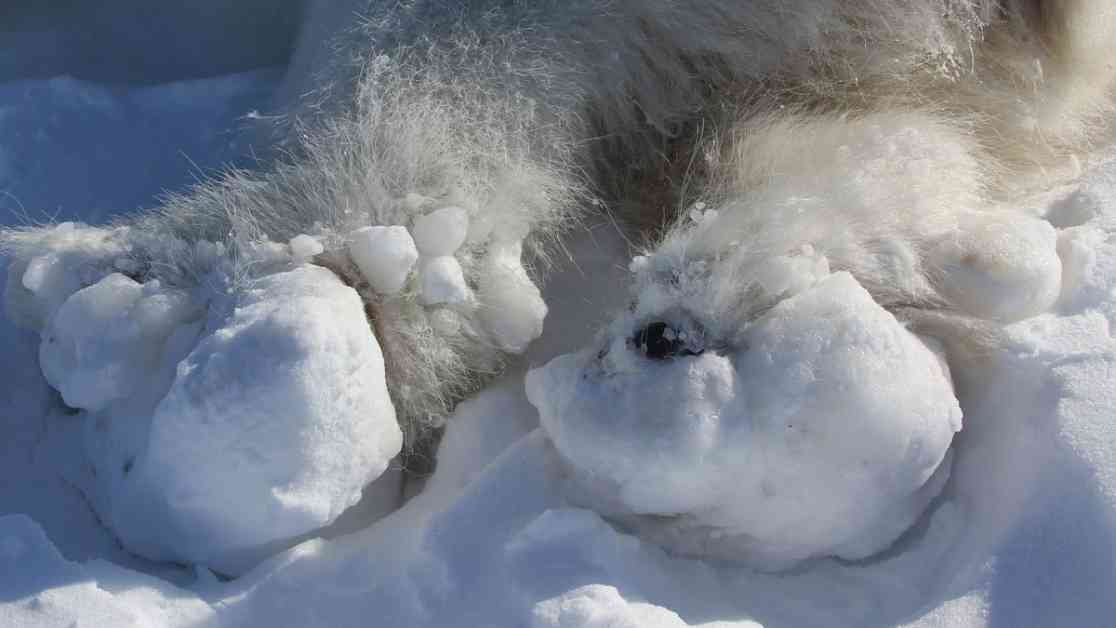Polar bears in the Arctic are facing severe injuries on their paws due to changing ice conditions, a recent study reveals. Researchers have observed polar bears with large chunks of ice frozen onto their feet, causing deep cuts and bleeding on their paw pads. This phenomenon, never seen before, is believed to be a result of slushy snow accumulating between the bumps on the pads and freezing solid.
The study, led by marine ecologist Kristin Laidre from the University of Washington, highlights the impact of climate change on polar bears in the region. The researchers examined bears from populations in northern Greenland and found that approximately one in four bears suffered from ice-related injuries, primarily adult males. These injuries make it difficult for the affected bears to walk or run and are causing them significant pain.
According to the study, rising temperatures in the Arctic are leading to more frequent rainfall, turning snow into slush that gets stuck in the bears’ paws and freezes. This, coupled with freeze-thaw cycles and the formation of brittle ice, is creating hazardous conditions for polar bears as they navigate their icy habitats. Indigenous hunters in the area have also noticed these injuries on polar bears and linked them to recent changes in snow conditions.
The researchers stress the importance of understanding and addressing the impact of climate change on Arctic wildlife, particularly iconic species like polar bears. As temperatures continue to rise and ice conditions change, polar bears may face increased risks of foot injuries, affecting their ability to hunt and survive in their environment.
John Whiteman, an expert in polar bear research, expressed surprise at the findings of the study, emphasizing the need for further investigation into the root causes of these injuries. The study sheds light on the complex challenges faced by polar bears in a rapidly changing Arctic landscape and underscores the urgent need for conservation efforts to protect these vulnerable animals.
In conclusion, the plight of polar bears in the Arctic serves as a stark reminder of the impact of climate change on wildlife populations worldwide. By studying and addressing the factors contributing to injuries like those observed in polar bears, researchers and conservationists can work towards protecting these iconic animals and preserving their natural habitats for future generations.










